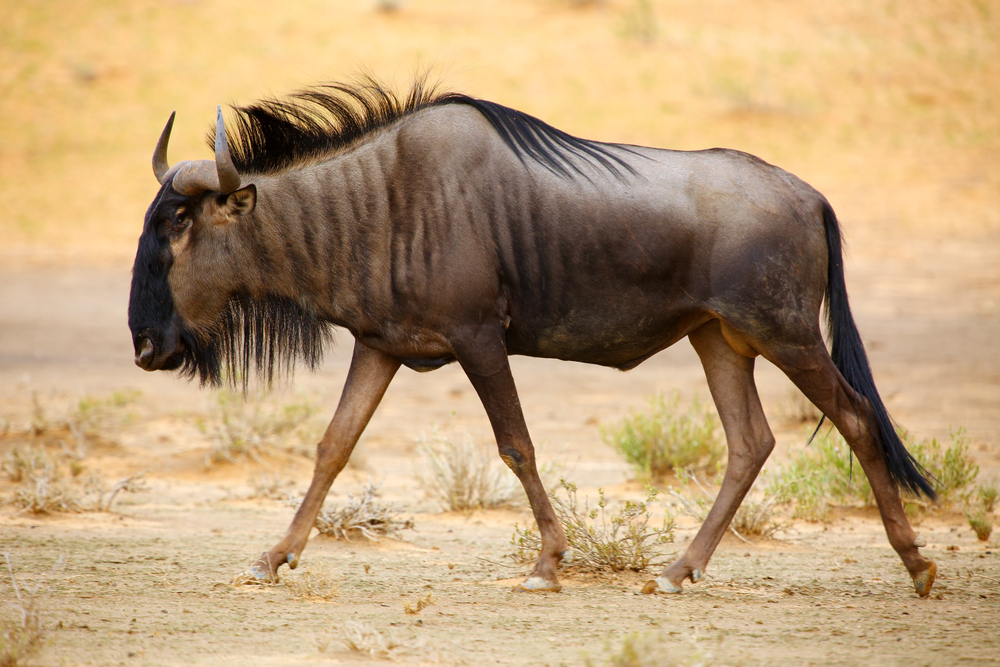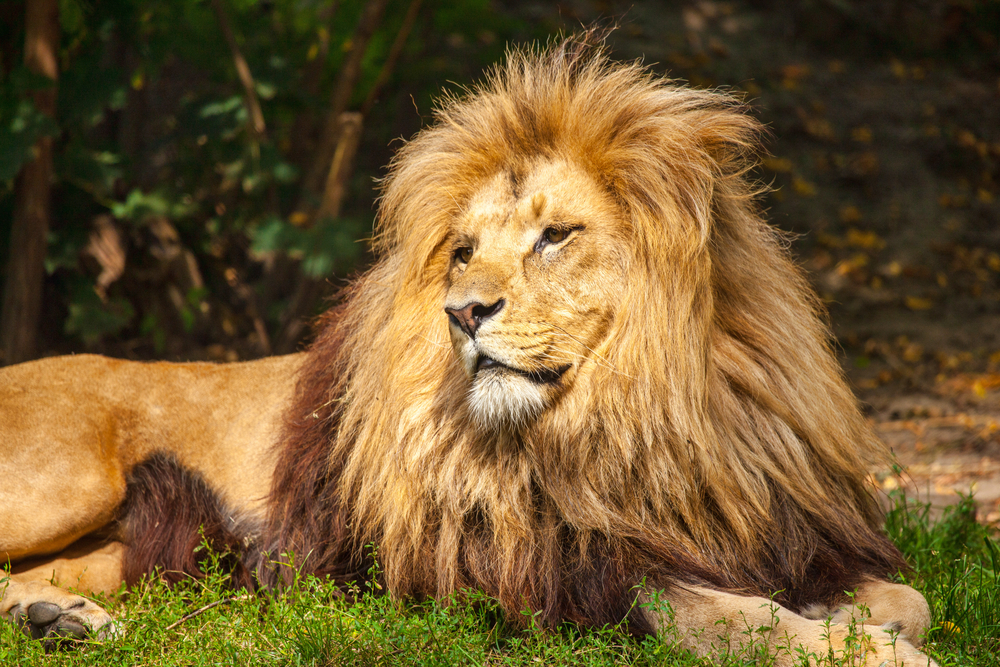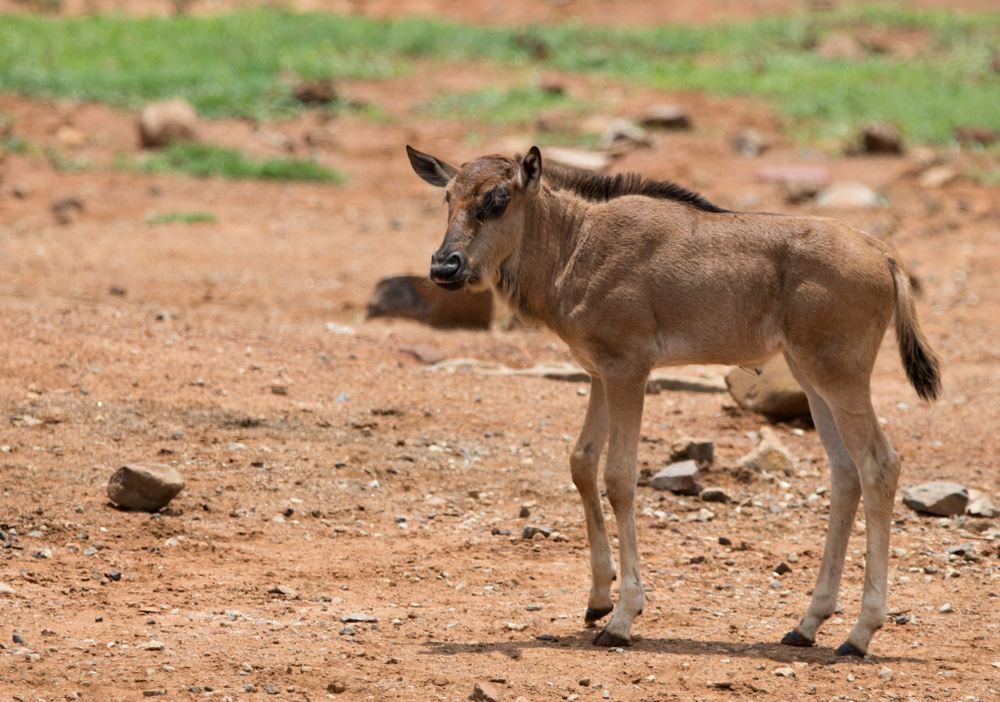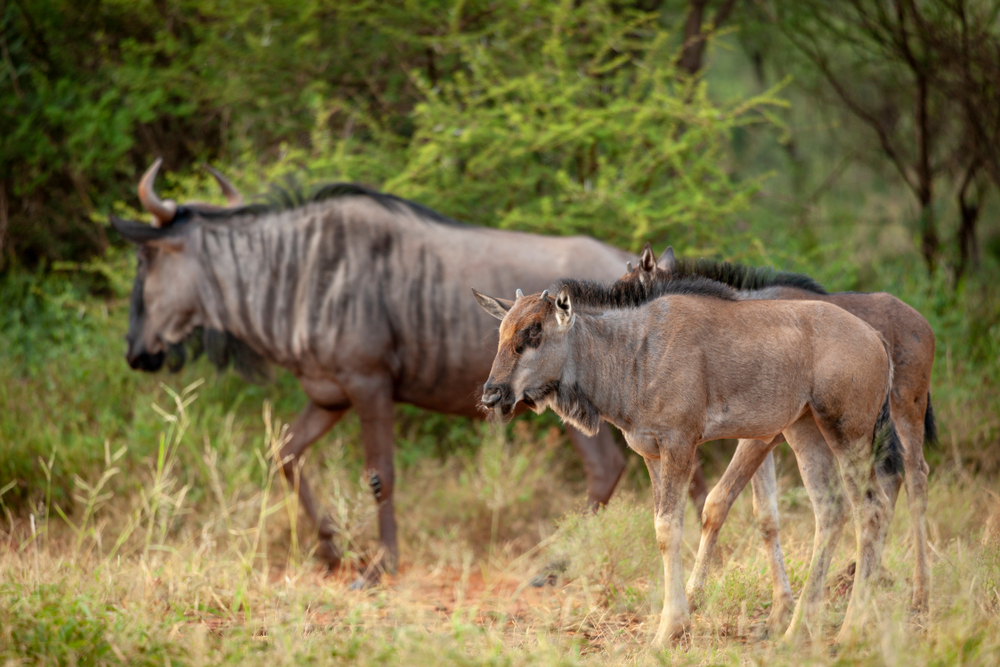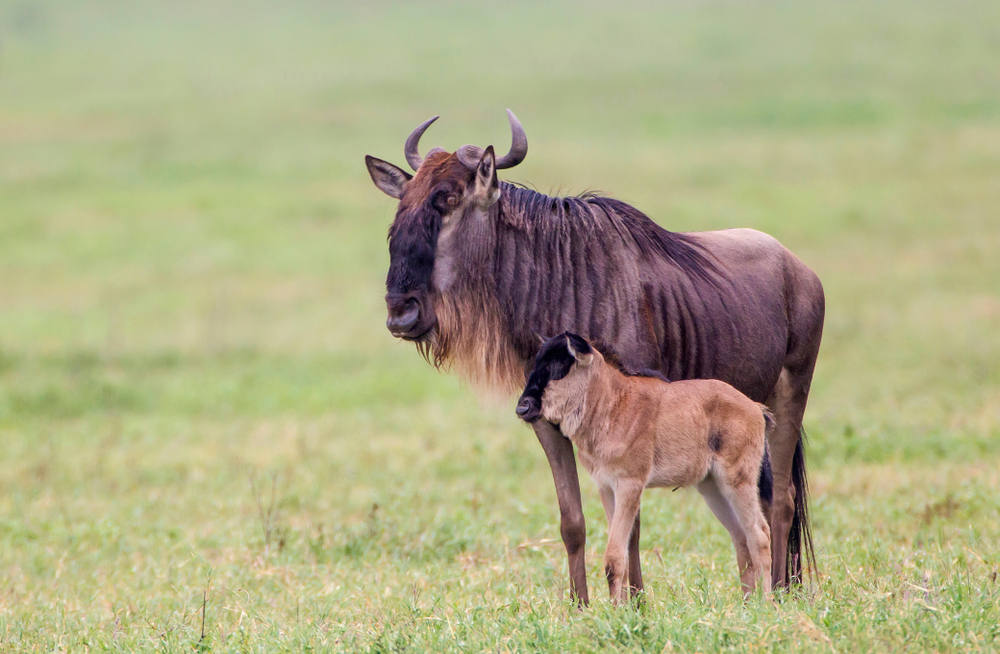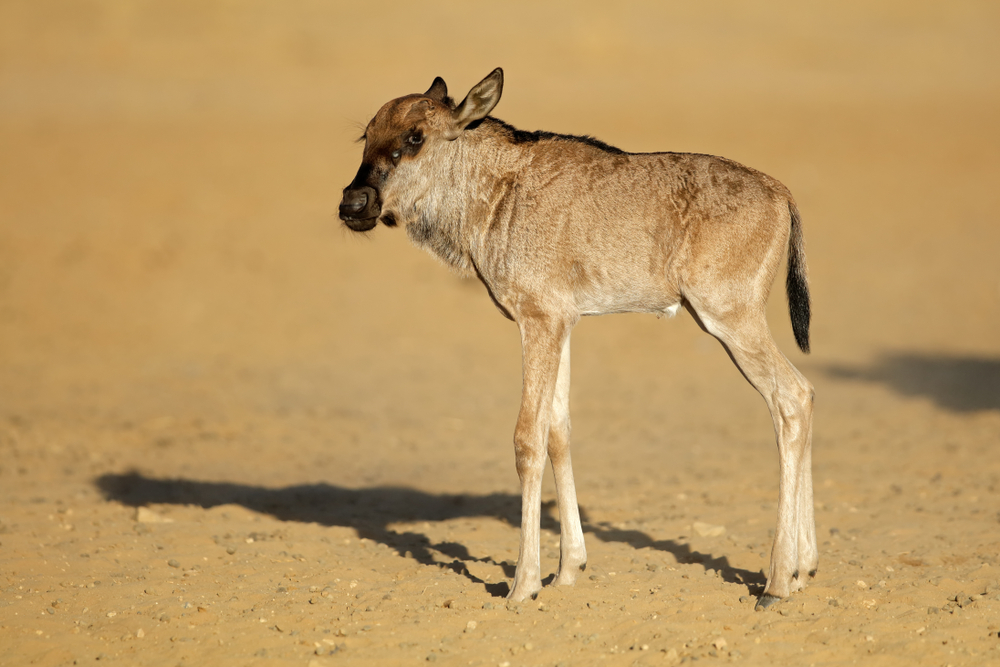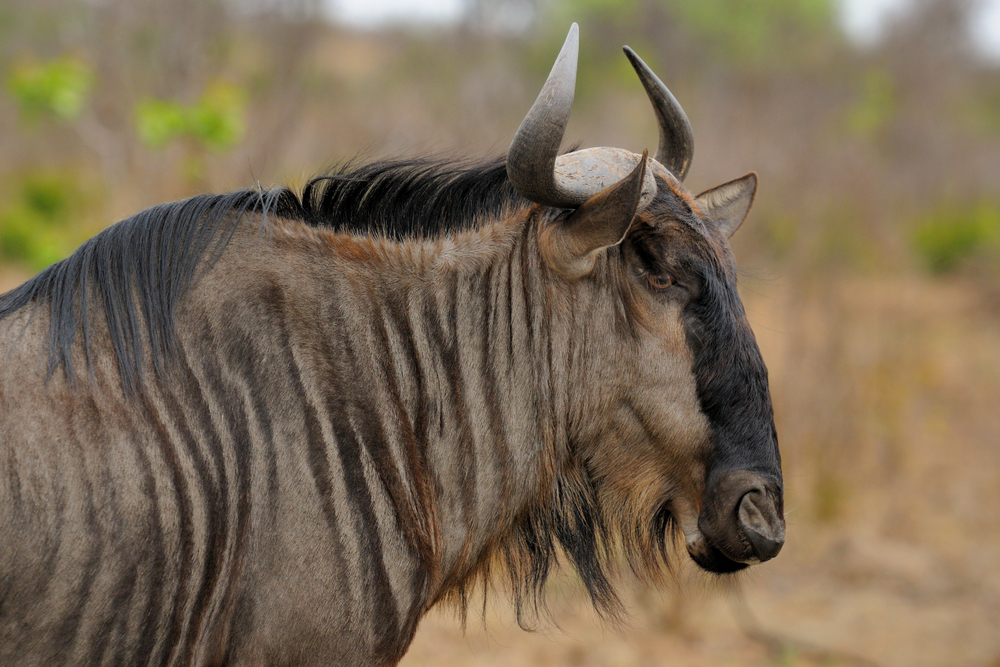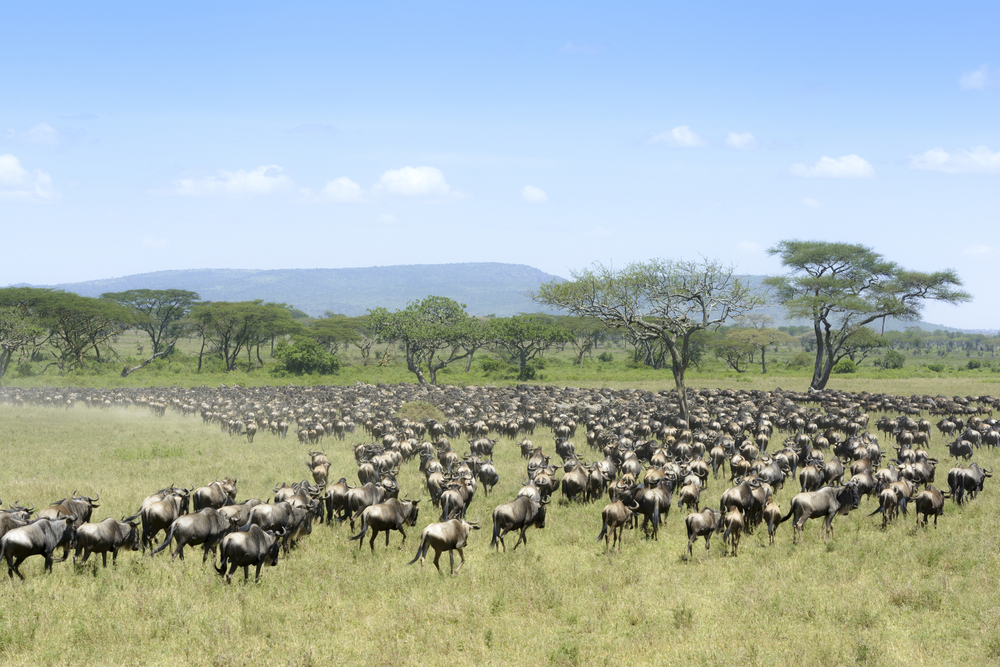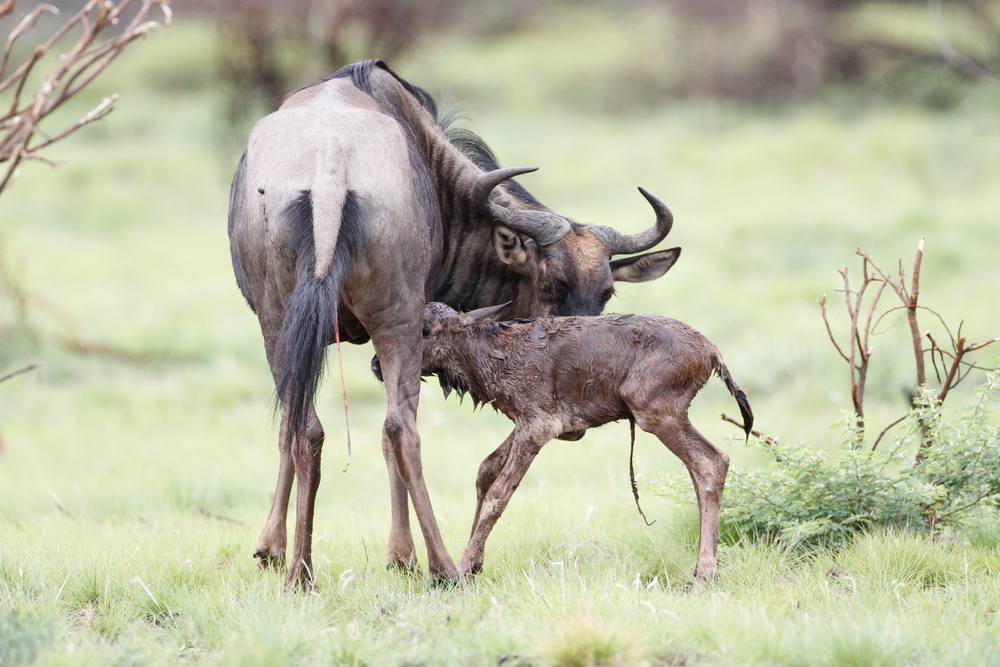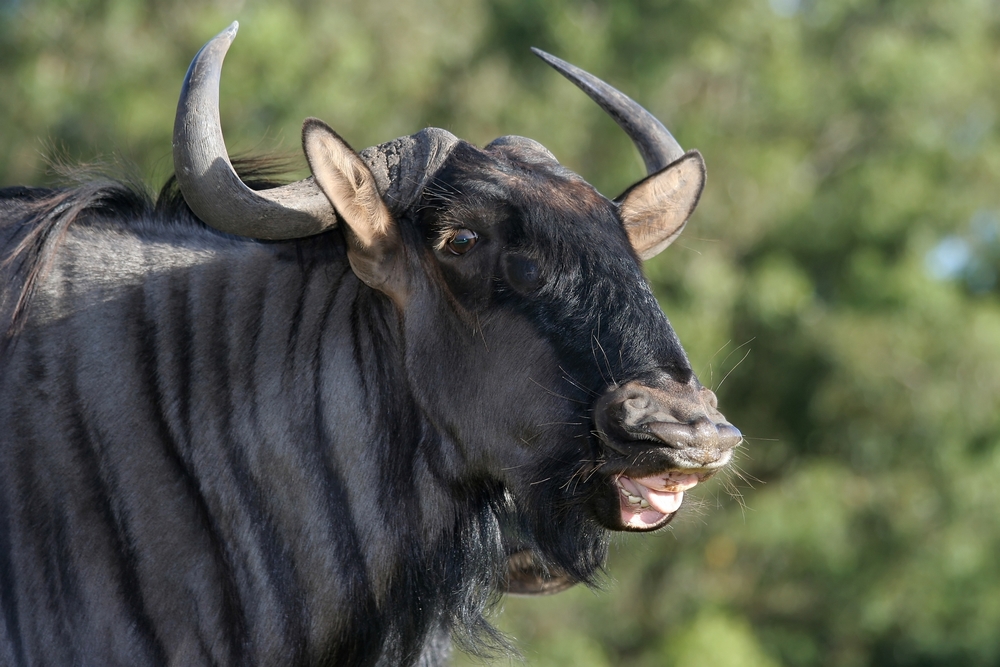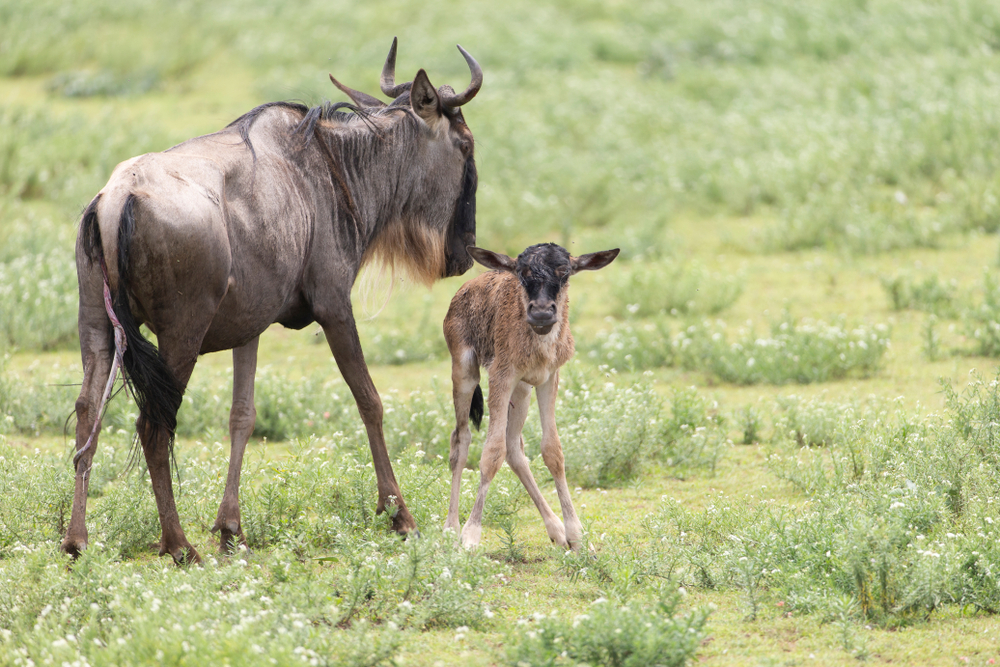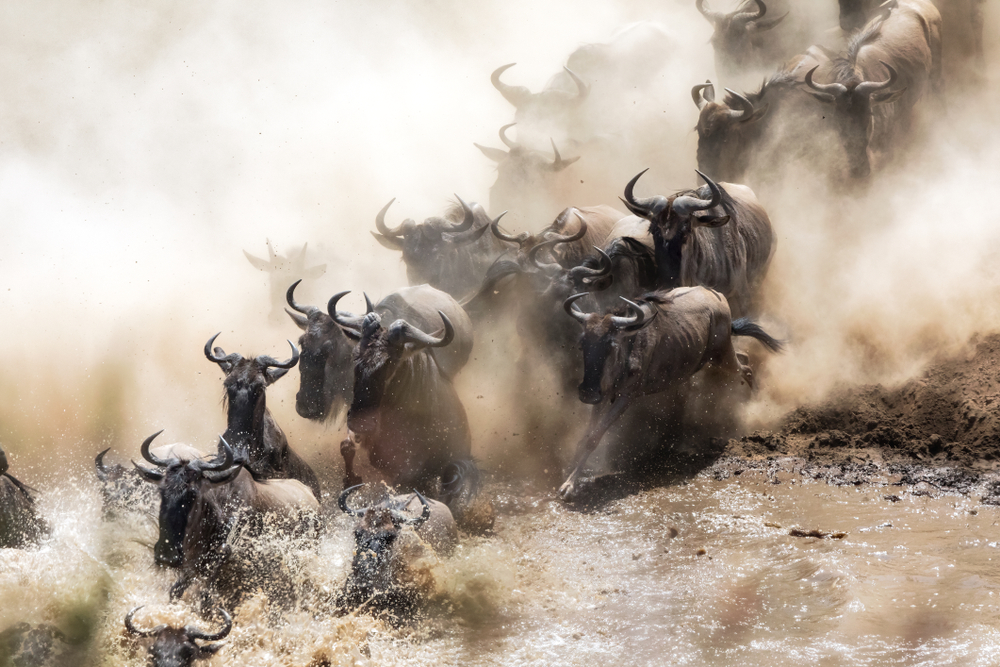About
#Antelope
#Mammals
The wildebeest, scientifically known as Connochaetes, is a remarkable and iconic species of herbivorous mammal that belongs to the family Bovidae. It is a native of Africa and occupies a prominent place in the Animal Kingdom as a member of the class Mammalia.
Wildebeests are often recognized for their distinctive appearance, which combines a sturdy build with long legs and curved horns. They are known for their striking migratory patterns, particularly the massive annual migration seen in East Africa, often referred to as the “Great Migration.” This incredible phenomenon involves millions of wildebeests, zebras, and other herbivores as they move across vast landscapes in search of fresh grazing opportunities and water sources.
These herbivores primarily graze on grasses and are well-adapted to their savanna and grassland habitats. Their social behavior and complex herd dynamics add to their allure, making them a subject of fascination for wildlife enthusiasts and researchers alike.
Wildebeests play a vital role in the ecosystems they inhabit, contributing to nutrient cycling and shaping the vegetation through their grazing activities. Their role in the food chain also makes them a crucial resource for predators in the African wilderness. As a species deeply intertwined with the African landscapes and ecosystems, the wildebeest holds a special place in the natural world and remains a symbol of the continent’s untamed beauty and wildlife diversity.
Conservation Concerns
Wildebeest populations face various conservation concerns, including habitat loss, fragmentation, and poaching for bushmeat and trophies. Human activities such as agriculture, livestock grazing, and infrastructure development have led to the degradation of their natural habitat, reducing available resources for wild populations.
Additionally, wildebeests are susceptible to diseases such as anthrax and rinderpest, which can cause significant mortality during mass gatherings. Climate change also poses a threat to their migration patterns and access to water and forage.
The International Union for Conservation of Nature (IUCN) Red List categorizes the Wildebeest as of least concern
Threatened:
Extinct
Critically Endangered
Endangered
Vulnerable
Near Threatened
Least Concern






























































